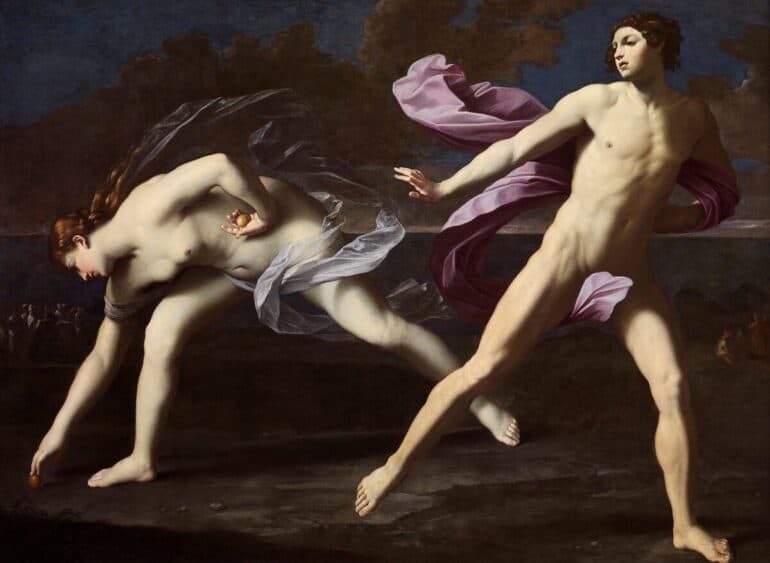The Borghese Gallery celebrates Guido Reni more than thirty years after the last Italian exhibition dedicated to him
There is a Bolognese in town. Specifically, one of the most illustrious, the painter Guido Reni. In fact, the exhibition set up in the halls of the Galleria Borghese in Rome is dedicated to him, curated by Francesca Cappelletti and open until May 22.
The exhibition, which presents a corpus of 30 works displayed next to the museum’s permanent collection, revolves around the painting Country Dance, commissioned for Reni by Cardinal Scipione Borghese. This renowned work is considered a fundamental piece that helps the viewer to discover and better understand Reni’s first years in Rome.
The painting was originally sold in the 19th century and was lost until 2008 when it reappeared on the antique market known anonymously as Bolognese. The piece has since been evaluated and recognized to be the original work of Reni. It has been repurchased and now hangs in the museum.
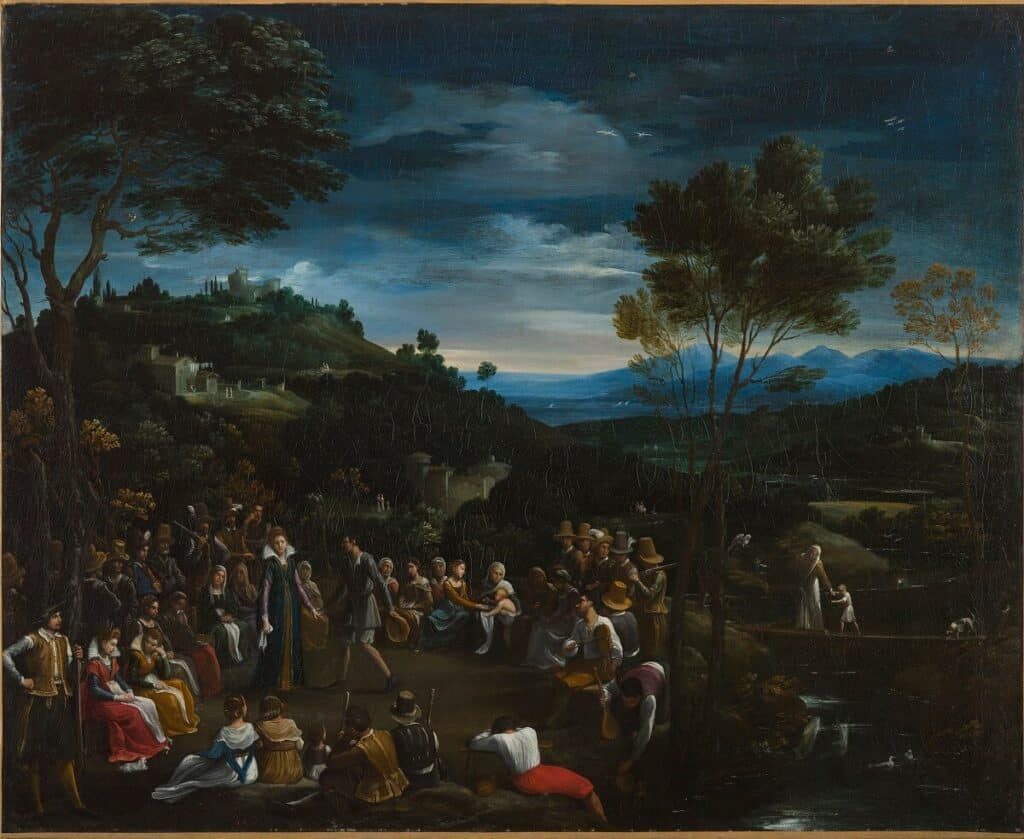
The Exhibition Path
The beginning of the exhibition, set up in the entrance hall, includes 4 monumental altarpieces (the Crucifixion of St. Peter, the Trinity with the Madonna of Loreto and the Patron, Cardinal Antonio Maria Gallo, the Martyrdom of Saint Catherine of Alexandria and the Martyrdom of Saint Cecilia). They are all powerful works, characterized by a marked solemnity and a sacred sense, performed with clear celebratory intentions of the spirit and spiritual strength of the various protagonists represented.

The path continues with what is certainly the most powerful work on display, the Massacre of the Innocents: a riot of desperate mothers, taken by the hair by blind torturers sent to kill their firstborn at the behest of Herod, frightened by the prophecy about the arrival of the king of kings. The disheveled faces the silent cries, the barred eyes turned to the sky: everything progresses towards the inevitable, apex clearly evident in the foreground in the stagnant complexion of the bodies of the little ones already killed, terribly beautiful in their immobility as a classic putto deprived, unfortunately, of the proverbial playfulness.
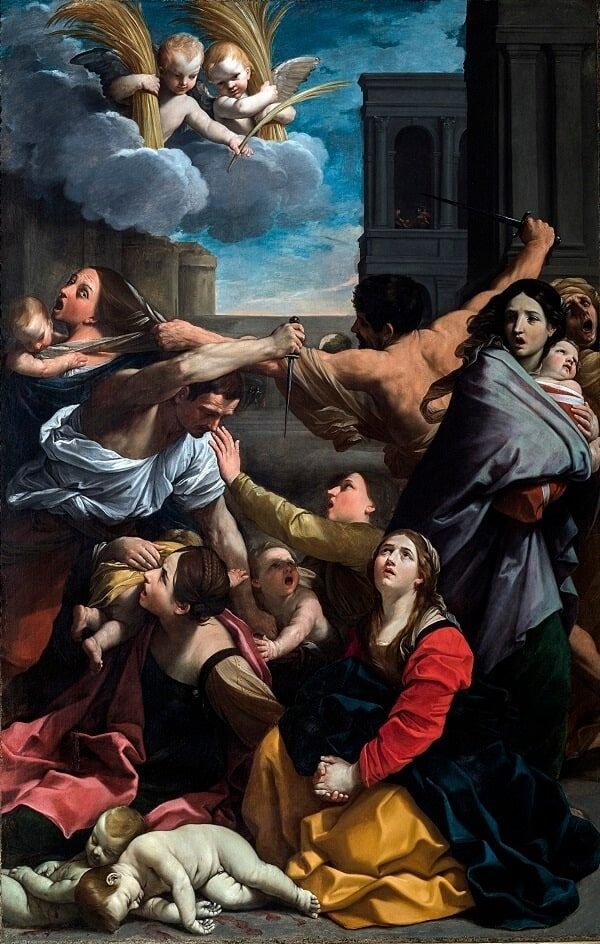
However, Reni’s best-known work remains Atalanta and Hippomenes (featured image), the moment in which the female vanity of the nymph prevails over her ability in running and her firm will not to marry. Stopping to collect the golden apples from the ground, in fact, the nymph automatically gives the victory of the competition to Hippomenes, who, thanks to this stratagem hatched by Venus, manages to win the race and therefore can marry her. The bodies of the two characters are a compendium of anatomy and sculptural grace: light, snappy, still in the moment from which you will not go back but still in motion, underlined by the supple flashing of the light veils that dress them.
The sculptural rendering of the drapery and poses also returns in San Paolo reproaches the penitent St. Peter and in Lot and his daughters; in the first canvas St. Peter almost seems to recall an ancient statue of a river deity, with a bearded face and a semi-lying pose, poised between getting lost in his thoughts and listening to Paolo, represented here with a beautiful curly head, almost Hellenic.
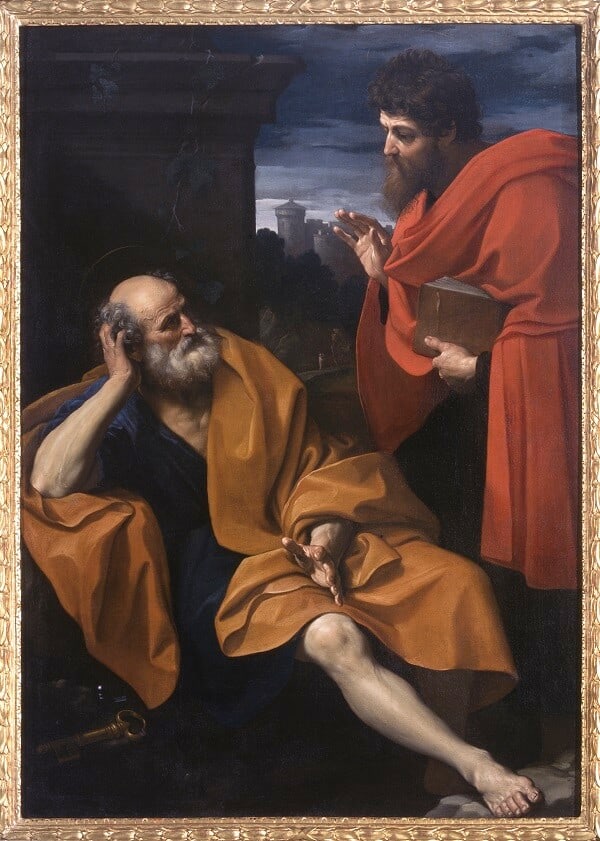
Lot and his daughters, on the other hand, shows us a dialogue that really lacks only the word: a game of looks, of calls, of speaking gestures, an alphabet known only by the hands and half-closed lips in listening, ready to respond. Even the drapery seems to participate in the inner motions of the three protagonists, in a game of hidden folds that paraphrase the accelerated beat caused by the unspeakable plan of the two young women towards their elderly father.
The exhibition then continues on the first floor, with a series of works that open a lively debate on the theme of landscape and that revolve like rays around the sun represented by the aforementioned Country Dance, of which we remember, among others, the Landscape with deer hunting by Niccolò dell’Abate, the Festa Campestre by Agostino Carracci and some paintings by Paul Bril that are part of the permanent collection of the Borghese Gallery.
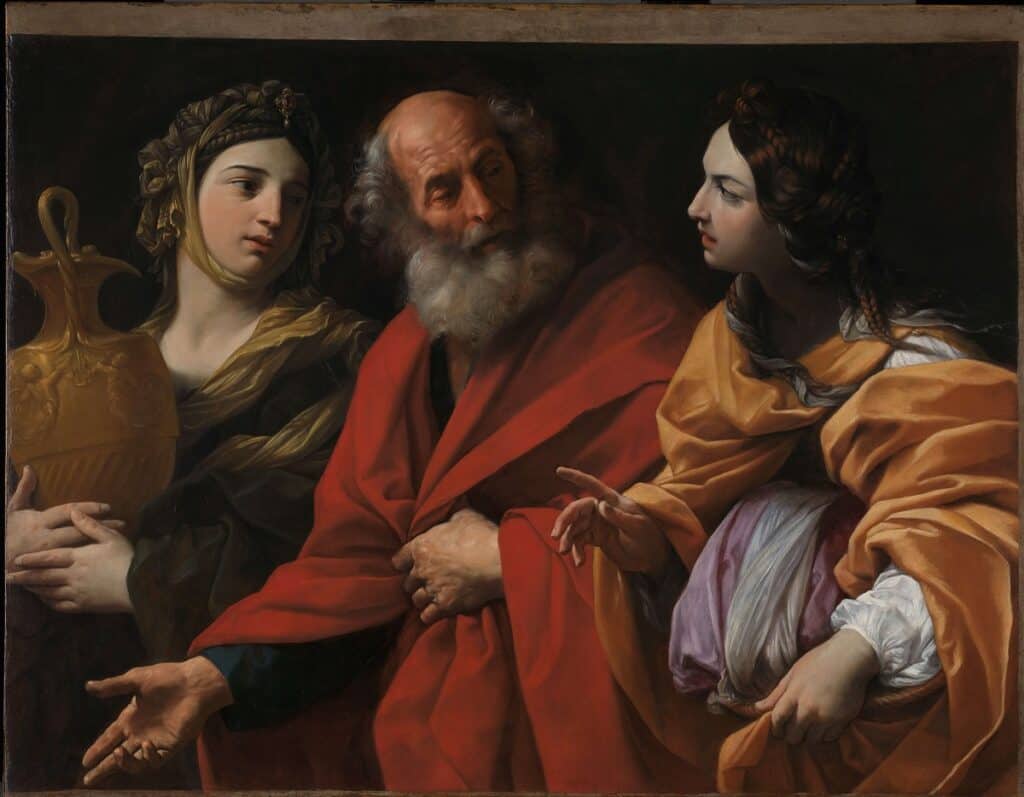
Guido Reni’s first Stay in Rome
Guido Reni came to Rome for the first time at the beginning of the seventeenth century; the impact of the city and especially of the artists who worked here was strong on the painter. Above all, the example of Caravaggio was the one that most marked his production; a striking example of this is in one of the works on display, the David with the Head of Goliath, commissioned by Cardinal Pietro Aldobrandini: the black background of darkness is a clear trademark of Caravaggio, together with the dramatic chiaroscuro that in Reni, however, declines in a phlegmatic elegance, which dulls the pathos by blocking the brutality of the mortal gesture made by the young biblical hero in an almost theatrical pose.
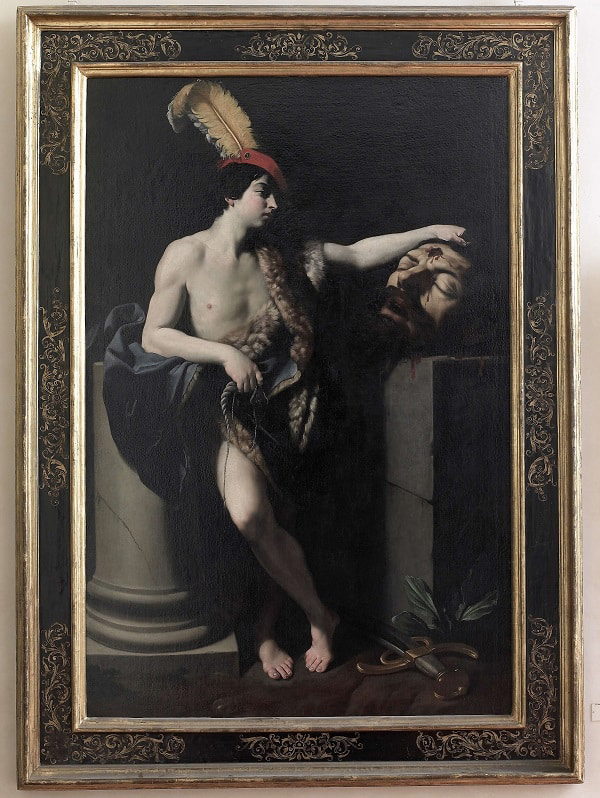
Until 22 May 2022
Galleria Borghese
Piazzale Cardinale Scipione Borghese, 5
Tue-Sun 9am-7pm (last entrance at 5.45pm)
galleriaborghese.beniculturali.it


